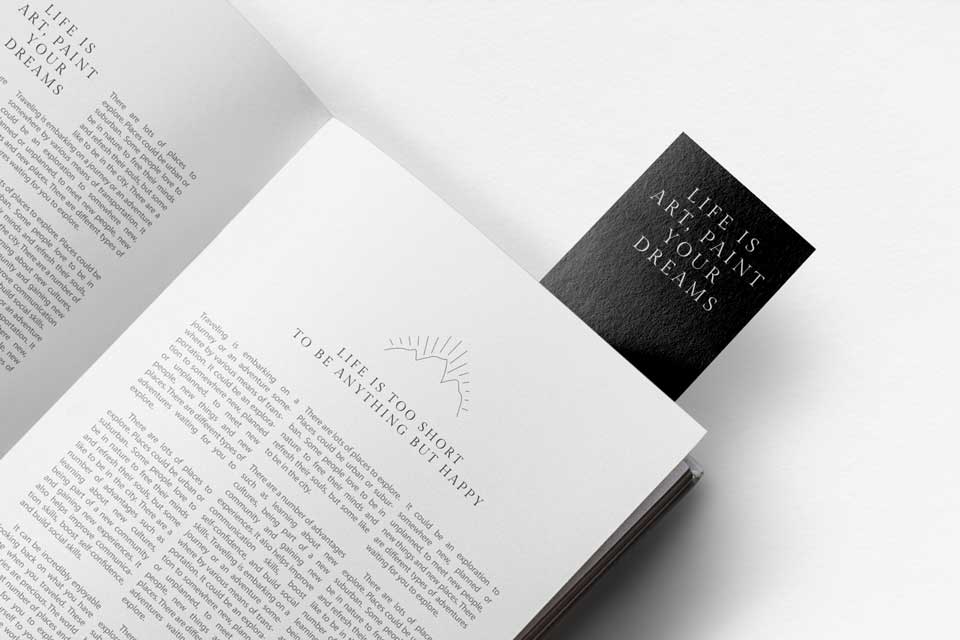7 Reasons Why Hybrid Publishing Is The Future
Hybrid publishing is the fastest-growing business model in book publishing, yet many authors have still never heard of it. Here’s an introduction.
What is hybrid publishing?
Hybrid publishing combines the best of both traditional publishing and self-publishing. It offers the selective curation, editorial oversight, professional design, marketing, and distribution services of traditional publishers, while also providing the creative freedom, shorter time frame, ownership, and higher royalties of self-publishing.
With traditional publishing, an author’s book is produced, marketed, and distributed at no cost to the author. Authors, however, have limited rights, low input, and receive a very small share of the profits.
Self-publishing, on the other hand, allows authors to exercise full control, and retain all of their rights and profits. It also puts all costs and know-how on the shoulders of the author. The author then risks producing a book of poor quality with high production fees and a low return on investment.
Hybrid publishing rests in the middle. It is often referred to as a “middle way” or “third way”. It is essentially a partnership that ensures professionalism, quality work, effective marketing and distribution, and a much higher percentage of royalties.
Is hybrid publishing the best choice for you? Here are 7 reasons why it is, and why it is the future of book publishing.
1.
IT’S AUTHOR-CENTRIC

Hybrid publishing, also known as partner publishing, co-publishing, or author-centric publishing, prioritizes the author’s vision and intent. By valuing a diversity of voices, hybrid publishing fosters greater creative freedom for authors. In contrast, traditional publishing tends to prioritize profits and appeal to a wide audience, often resulting in the rejection of niche or unconventional works.
Traditional publishing lacks diversity. Lee & Low Books conducted a survey in 2019 that found 76% of employees in the publishing industry are white, 97% are cisgender, 88% are heterosexual, and 92% are non-disabled. The result is traditional publishing continues to furnish like voices.
Furthermore, traditional publishing’s massive consolidations have led to conglomerates like the Big 5, making the system even less adaptable in a rapidly changing publishing landscape. Many authors within the traditional publishing system feel like commodities in a factory rather than creatives in a supported creative space.
Hybrid publishing emerged as a solution to these issues, welcoming unconventional authors with niche, “too-literary”, or iconoclastic works, and those without a platform. It offers a nurturing environment for authors to publish their work while maintaining creative control.
2.
CREATIVE FREEDOM

In Hybrid publishing, authors have a say in every aspect of their book’s production. From the cover design to the marketing plan, authors are involved in the decision-making process, and have more agency than is ever afforded them in traditional publishing.
In contrast, traditional publishing houses typically own, define, and control an author’s book. During the editorial phase, editors may significantly change a manuscript to appeal to a wider audience. The publishing house decides on the book’s look, layout, marketing plan, and distribution, with little creative or strategic input from the author.
For traditional publishing houses, full control is a safeguard to recuperating their investment, relying on their own expertise. However, by defining every aspect of the book, they not only define what success looks like for them but for the author as well.
Hybrid publishers coproduce. They use their expertise as a guide and co-pilot. Ownership stays with the author. The entire process is personal and collaborative, so authors can make decisions that best serve their work, and maintain their artistic integrity.
3.
QUALITY WORK

In traditional publishing, the quality of the work is not enough. The author must also meet external conditions, such as having a large platform or work that appeals to a broad audience.
Meanwhile, self-publishing companies will publish anything for a fee, with no vetting or oversight. Payment is their only criterion. As a result, a proliferation of unprofessional and unprofitable work floods the market every year, leaving millions of hopeful new authors with no audience and no return on their investment.
Hybrid publishing is selective and personal. Submissions are carefully chosen by professional editors. Authors are assigned a primary person who works closely with them to polish and perfect their work.
Hybrid publishers prioritize quality work. A considerable percentage of their income is from book sales, not fees. Fees enable hybrid publishers to do the work and provide authors with much higher royalties. However, book sales are the goal for both author and publisher. Hybrid publishers are keenly selective and produce quality work to ensure success.
The Independent Book Publishing Association (IBPA) also created publishing standards to distinguish reputable hybrid publishers from vanity publishers. Any reputable hybrid publisher will meet these criteria.
4.
LEGITIMACY

Traditional publishing houses offer an author status and legitimacy. They confer greater visibility and credibility. However, the author needs to waive their rights, receives a small percentage of royalties, and often has limited support for marketing and promotion. The association with a reputable publishing house is a powerful endorsement, but it is also a trade-off.
Many authors who have not secured a traditional publisher may not feel competent to undertake the significant task of self-publishing. They seek a “middle way”. Hybrid publishers provide the same level of expertise and credibility as traditional publishing houses, while also offering authors more control and higher royalties.
Literary agents also seek out hybrid publishers to help their clients achieve greater legitimacy and visibility in the market. Self-publishing cannot create a comparable publishing experience and has a relatively negative reputation regarding quality and professionalism.
For new authors, assistance and credibility is often the driving force in choosing a publisher. For seasoned authors, celebrities, influencers, or nonfiction authors with successful careers, having the professionalism and credibility of a hybrid publisher, along with higher royalties from their larger platforms can be more enticing. The derivative income of consulting, speaking engagements, and other educational venues is also supported by this professional standard of quality and credibility. Having the legitimacy of a reputable publisher altogether elevates their profile.
5.
MARKETING & DISTRIBUTION

A traditional publishing house’s greatest asset is its’ colossal marketing and distribution machine. No self-publisher can compete with the extensive structures in place to promote, sell and distribute books to an expansive retail market.
Hybrid publishers also provide their authors with marketing, publicity, distribution, and sales channels. Though they do not have distribution structures on par with major traditional publishing houses, hybrid publishers have the competency to produce the professional look and feel of traditionally published books. They can assist with print runs, and brick and mortar retail placement. With self-publishing, distribution is at best very challenging, with little to no access to bookstores.
The playing field will be even more level in the future. Print On Demand (POD) and online book sales are changing the way books are printed and distributed. In the US today, Amazon is responsible for more than 50% of all book sales, both print and electronic. Marketing at large has gone digital and social. Small presses are more adept at creating and managing social media campaigns, and other avenues of organic marketing. As a result, authors who publish with hybrid publishers have a better chance of cultivating strong organic marketing strategies and results, reaching wider audiences directly.
6.
TIME

Hybrid publishing offers a faster route to publication. Unlike traditional publishing houses, hybrid publishers are smaller and more nimble, allowing them to respond quickly to current trends and topics. They can take a manuscript from edits to market within a matter of months, which can be critical to a book’s success depending on its subject matter.
In contrast, traditional publishers have a protracted timeline that can take up to two years from start to publication. This delay can be injurious to any book whose topic may lose relevance by the time it’s released. Additionally, as the old adage goes, “time is money.” Hybrid publishers can produce high-quality books in a fraction of the time, helping authors to save on both.
7.
MONEY

Traditional publishing houses are not only slow to publish, they are also slow to pay. Royalty payouts to authors are typically between every 6 months to a year. This timeframe can be even longer if an author has received an advance, but hasn’t met the sales threshold.
Additionally, the royalty rates for hardcover and paperback books are 10-15% and 8-10%, respectively, while ebooks usually offer 25%. Authors are required to do a significant portion of their own publicity and often have to forfeit their rights in order to sign a contract. If an author decides to work with an agent, the agent will also take a fee. These are all additional losses and expenses.
Self-publishing may then seem like a better option, but authors must be very cautious. Although authors keep their rights and receive 100% of the profits, self-publishing companies charge production fees and self-publishing platforms take anywhere from 30-70% of the author’s royalties. Without the guidance and professionalism of a committed publishing house, or the ability to have wider distribution, sales typically suffer. Naturally, sales are the goal, and without them, benefits like higher royalties are rendered meaningless.
In contrast, hybrid publishers offer the best of both worlds.
They pay their authors monthly and offer royalties of up to 50%. These regular and significant payouts are for a book that has been professionally crafted and produced, with marketing and distribution assistance that increases the probability of sales. Although authors are still required to actively participate in publicity efforts and organic marketing, hybrid publishers have invested in their author’s success by virtue of their collaborative business model. They cannot afford the large advances or write-offs for losses like large publishing houses, and they don’t rely solely on author’s fees with zero interest in the book’s actual success.
Hybrid publishers’ small rosters of authors enable them to work closely and carefully to develop authentic quality work. This type of work brings diversity and value to the marketplace. The joint venture hybrid publishers make with authors means their financial and personal success is shared.
CONCLUSION
Hybrid publishing is revolutionizing the publishing industry, providing a new alternative for authors seeking greater creative freedom and profit. It rivals the status quo, honoring and promoting diversity and authenticity. It empowers authors by way of offering them guided participation in every aspect of the publishing process. This partnership structure of mutual investment and collaboration also fosters camaraderie and mutual respect.
IBPA standards for quality and transparency further establish hybrid publishings’ legitimacy and create a framework for what authors should expect. And while traditional publishers may have greater resources for marketing and distribution, the marketplace is rapidly changing.
Hybrid publishing provides authors with a new path to fulfillment and success. The future of book publishing is cooperative.
For more information, or to get started on your book publishing journey, contact us at Hansen Dyson today.



